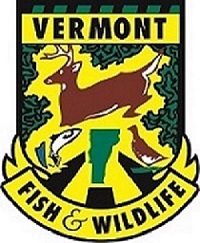
The Vermont Fish and Wildlife Department and partners will soon place new signs near eight ponds where the use of baitfish is prohibited. The signs will remind anglers that use of baitfish poses a threat to the wild native brook trout that have existed there for thousands of years.
“Wild native brook trout thrive in ponds where there are simple fish communities with no or few other fish species,” said department Fisheries Biologist Jud Kratzer. “Adding new fish species, even minnows, disrupts a long-established food chain. Trout populations suffer as a result.”
Brook trout are native to the Eastern United States, but no longer exist in much of their original range. “Vermont boasts thousands of miles of cold, clean streams that provide excellent habitat for self-sustaining populations of wild brook trout, but only a few ponds in the state support wild brook trout,” Kratzer said. “The baitfish prohibition on these special ponds will help the brook trout survive so they can be appreciated by future generations,” he added.
Brook trout are Vermont’s official coldwater fish. The signs will be posted at public access points near the following ponds: Beaver Pond (Holland); Blake Pond (Sutton); Cow Mountain Pond (Granby); Jobs Pond (Westmore); Lewis Pond (Lewis); North Pond (Chittenden); Unknown Pond (Avery’s Gore); and Noyes Pond (Groton).
This informational sign initiative is a collaboration between Vermont Fish and Wildlife Department, Vermont Department of Forest, Parks and Recreation; U.S. Forest Service, U.S. Fish and Wildlife Service and the Vermont Chapter of Native Fish Coalition, an all-volunteer non-profit organization.
